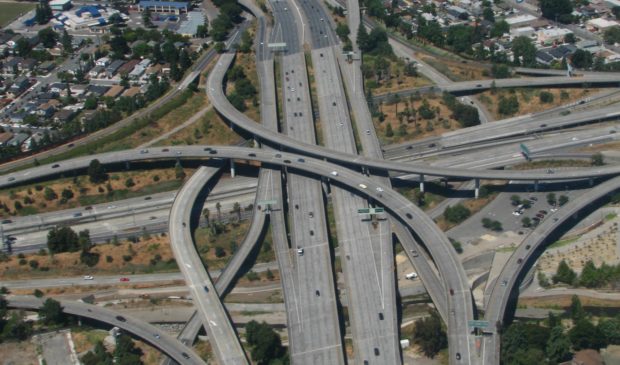CAMPO preparing to adopt necessary traffic-reducing strategies
Thursday, October 18, 2018 by
Ryan Thornton With promises of traffic congestion relief coming from every direction, be it e-scooters, autonomous vehicles, reliable transit or ride-share services, the number of personal cars on Austin streets is still unlikely to decrease in the near future. Until a systematic mobility solution is found, the region will continue to grapple with the problem increasingly on everyone’s mind: traffic congestion.
One way to mitigate traffic problems is to efficiently deal with traffic incidents – crashes and disabled vehicles – which are responsible for 25 percent of traffic congestion.
Tom Fowler, vice president of engineering consultant firm Kimley-Horn and Associates, presented a draft of a Regional Incident Management Strategic Plan and Performance Assessment – the result of a Regional Incident Management Study – to the Capital Area Metropolitan Planning Organization Transportation Policy Board on Monday evening with data and advice on how the region might begin to improve traffic incident management. The plan is the result of collaborative effort comprising a steering committee, eight regional governing bodies and 56 individual stakeholders from 21 agencies.
The study was conducted with three primary goals in mind: reduce the impacts of traffic incidents to travelers, reduce the number of secondary crashes (those caused by initial crashes), and provide timely information to the public to improve travel decisions. The number of initial crashes and disabled vehicles, however, was beyond the study’s scope.
“While we hope at one point in time we can reduce crashes, we don’t see that in the foreseeable future,” Fowler said.
According to Texas Department of Transportation data cited by Fowler, the month of July marked 365 crashes and over 2,000 disabled vehicles on monitored state routes alone. Fowler briefly mentioned the developing potential of autonomous and connected vehicles to reduce these figures in the future, but emphasized that such solutions are still a long way from implementation.
The impact of crashes and disabled vehicles, however, according to the report, can be predictably minimized through a variety of strategies, which the plan broke down into 29 specific recommendations grouped into seven categories: policy, communication and coordination efforts, infrastructure, response and clearance, training, data and performance measures, and public engagement.
Each recommendation was scored by cost and ease of implementation and cost-benefit ratio.
For example, expansion of Austin’s Highway Emergency Response Operator (HERO) Program, which provides roadside assistance along major routes, has a relatively low benefit-cost ratio of 5:1. On the other end of the spectrum, adding additional freeway lighting to minimize secondary crashes has a benefit-cost ratio of 40:1.
In addition to the 29 specific recommendations, the plan suggests that CAMPO develop the following six key policies and programs:
- a Regional Open Roads Policy
- a Standardized HAZMAT and Non-HAZMAT Clean-up Policy for the Region
- a Framework for a Regional Rapid Clear Towing Program
- a Framework for an I-35 Heavy Tow Program
- a Standardized Data Collection and Performance Measures Framework for the Region
- a Regional State of Traffic Incident Management Report
A final draft of the report will be presented to the CAMPO Technical Advisory Committee for recommendation to TPB on Monday, Oct. 22. The final plan will then be presented to TPB in November for approval.
Photo by Kevin Payravi [CC BY-SA 3.0 or GFDL], from Wikimedia Commons.
The Austin Monitor’s work is made possible by donations from the community. Though our reporting covers donors from time to time, we are careful to keep business and editorial efforts separate while maintaining transparency. A complete list of donors is available here, and our code of ethics is explained here.
You're a community leader
And we’re honored you look to us for serious, in-depth news. You know a strong community needs local and dedicated watchdog reporting. We’re here for you and that won’t change. Now will you take the powerful next step and support our nonprofit news organization?






